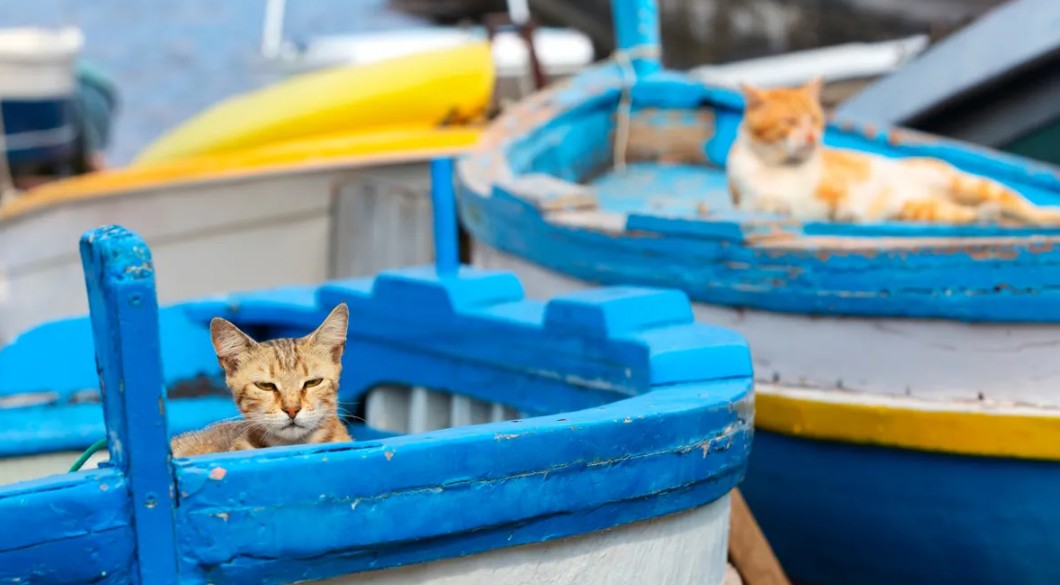 |
|
(Sally Anscombe/Getty Images)
|
Full Story: IFLScience (UK) (4/30)
Pet Cat Found On 16th Century Shipwreck Is Earliest Evidence Of Them In The US
In typical fashion, cats took their time taking over the Americas.

There’s an age-old tradition of cats looking moody on boats.
Image credit: xamnesiacx84/Shutterstock.com
Pet cats are a relatively new addition to the Americas. While this part of the world does have plenty of wild cats – from bobcats and jaguars to lynx and cougars – the paws of domesticated cats didn’t set foot here until European colonization around 500 years ago.
The anthropologists believe the cats were kept on the ships to hunt down pesky rodents and may have also served as companions to sailors.
As you would expect, they were treated like royalty. Although they most likely served as “mousers” for the crew, stable isotope analysis of their skeletal remains suggested their diet mainly consisted of animal protein from fish, pork, poultry, and possibly beef. Evidently, the sailors were sharing their meager supplies with the cats.
This strongly suggests the cats were not taken onboard for consumption or fur, despite such uses being common in parts of medieval and early modern Europe. A Spanish cookbook from 1560 includes a recipe for roasted cat, while cat skeletons from Medieval sites across Europe often bear cut marks, suggesting they were skinned for their furs or butchered for their meat. Fortunately, this doesn’t seem to be the case here.
However, this find from the Floridian coast is not necessarily evidence of the first domesticated cats in the so-called “New World.” Among the islands of the Caribbean Sea, where Columbus first made landfall in 1492 CE, there’s evidence that many early Spanish settlements likely had cats.
“The first cats to reach the Americas may have accompanied Columbus, although they are not mentioned in records of these voyages,” the study notes.
By the early 1600s, cats really started to make a presence in what would become the US. Cats from England were brought over to Jamestown, the first permanent English settlement in North America, in 1607. We know this because of the grueling accounts from the “Great Starving” that speak of famished people who were forced to eat their cats and dogs.
Some historians also suspect that cats were on board the Mayflower when the Pilgrims arrived in Plymouth, Massachusetts, in 1620, not least because feline remains were recovered from the Clarke Site (1630 to 1676) in Plymouth.
Four centuries on, the cat-conquest of the US has proved to be an outright success. There are around 73,800,000 cats in the US and they’ve infiltrated around one-third of the nation’s households, according to the American Veterinary Medical Foundation. That’s a pretty impressive conquest considering they’ve only been on the continent for a few hundred years.
Dogs, by comparison, have been in the Americas for a very long time. Genetic research shows that canine companions joined the first waves of people who crossed from Asia to North America sometime before 15,000 years ago.
In other words, while dogs helped humans colonize a continent, cats showed up late to the party – typical!
The study is published in the journal American Antiquity.




